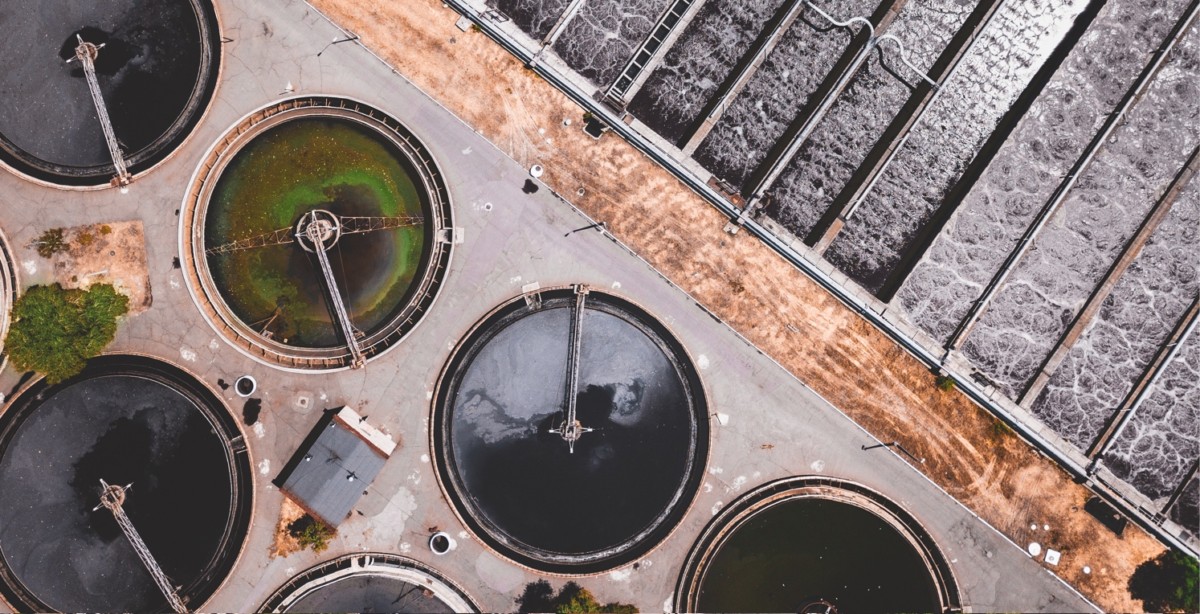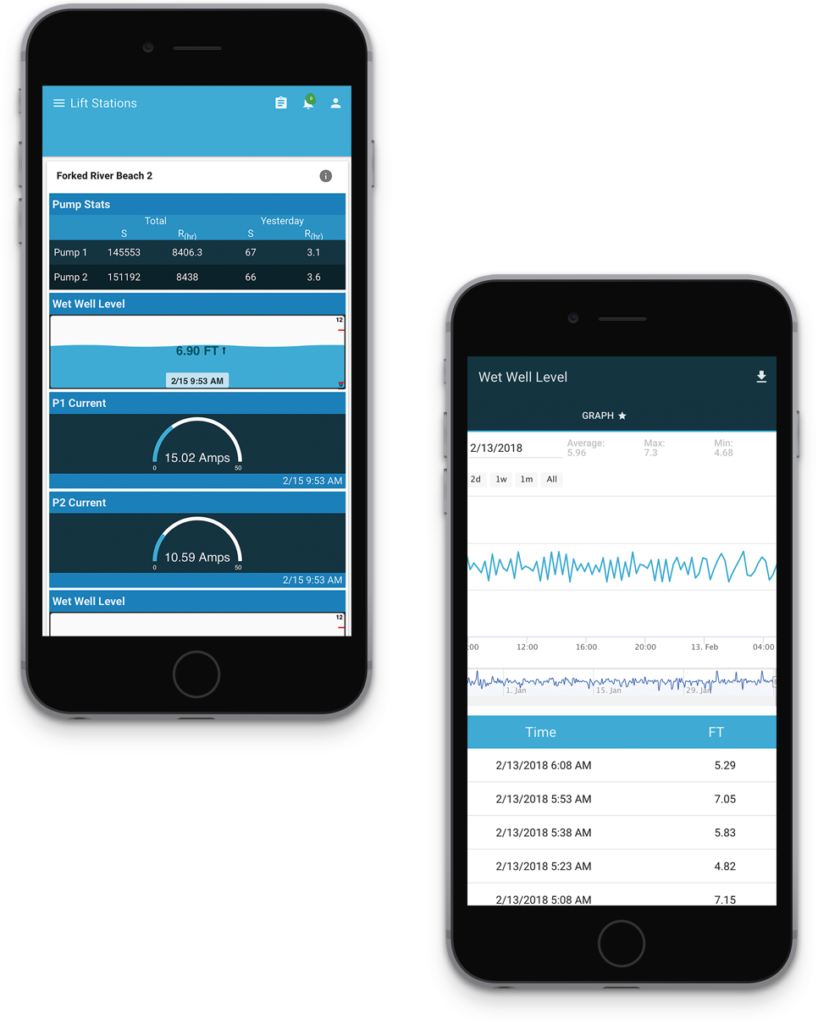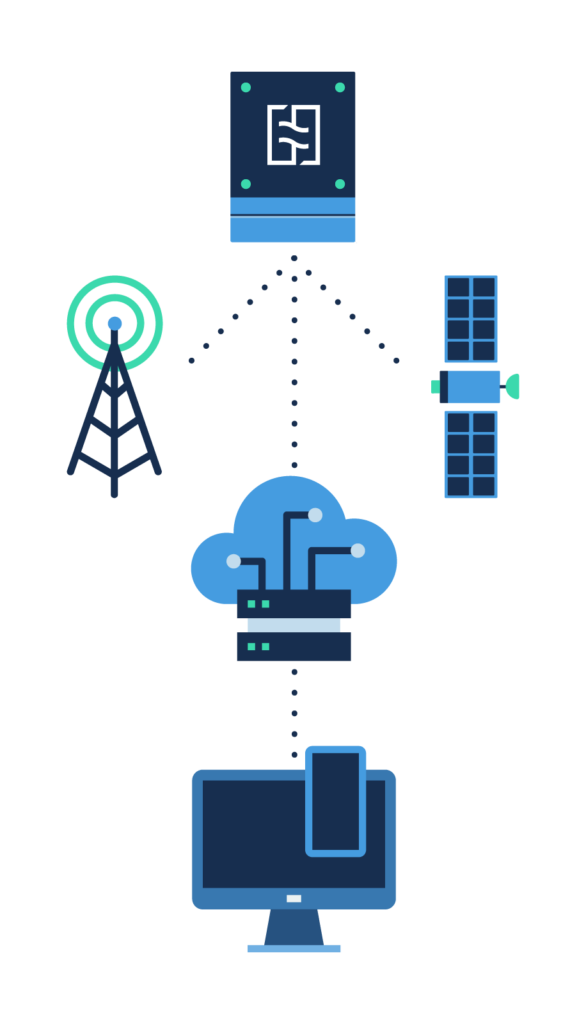What is a Lift Station?
A wastewater lift station is a pumping station that moves wastewater from a lower elevation to a higher elevation. The benefit of using a lift station in a sewage collection system is that it saves a substantial amount of money in excavation costs, which involves digging for sewer pipes. Sewer pipes live underground, and digging trenches is costly. Installing a wastewater lift station at certain points in a gravity pipeline system saves on front-end construction costs without sacrificing efficiency or functionality. They play an integral role in moving sewage to a wastewater treatment plant.
How Does a Lift Station Work?
A lift station is an integral part of an effective sewage collection system. Raw sewage journeys underground in sloped pipelines that take advantage of gravity to keep costs down. This type of pipe system is commonly referred to as a gravity pipeline. In some situations, wastewater must enter the pipe system from a lower elevation. For the raw sewage to continue the journey toward a wastewater treatment plant, it needs to be efficiently transported to a higher elevation. This can’t happen naturally for obvious reasons – it would defy the laws of gravity and physics. Fortunately, we have the wastewater lift stations to help.
Eventually, the raw sewage reaches a storage container called a wet well, a holding cell that empties out once it reaches a predetermined level. While in the wet well, the wastewater is tested and carefully monitored to detect sewage levels. Coarse (solid) materials are removed at this stage. Once the wet well is full, a lift station pump will “lift” the sewage upwards using a pressurized sewer force main. A sewer force main is a system that consists of pumps and compressors. Its purpose is to elevate the wastewater to a higher elevation so it can continue its inevitable journey toward treatment and recirculation.

Types of Lift Stations
Lift Station Components
A functional wastewater lift station pump consists of multiple working parts and components. Everything from a power supply to remote monitoring and control must be in working order to effectively collect and treat wastewater. Every aspect of the lift station pump needs to be contained and installed in an enclosed structure. Systems can be pre-designed or customized to accommodate the specific needs of the responsible municipality.
Lift station components include:
- Receiving well (wet well)
- Screen or grinding to remove coarse materials
- Pumps and compressors
- Associated valves
- Electric motors
- Power supply system
- Equipment control and lift station alarm system
- Odor control and ventilation system
Wastewater Lift Station Standards
Lift stations must adhere to numerous safety, operational, environmental, and performance standards to be efficient, safe, and reliable. Safety features such as emergency stop buttons, interlocks, and alarms must be included, as well as materials that won’t corrode or leach into the environment. To ensure these standards are met, it is important for wastewater lift station owners to inspect and maintain their stations regularly.
Lift station standards include:
- Matching pump capacity with the quantity and quality of wastewater being treated
- Operate reliably and without interruption
- Offer streamlined maintenance and operation
- Not restrict future capacity and expansion needs
- Avoid excessive release of odors
- Have minimal environmental impacts on the surrounding area
- Avoid overflow and flooding
Contact Us
Lift Station Maintenance
Sewage is a hazardous material that must be handled and treated. Wastewater operators must be keenly aware that lift stations require routine maintenance. Keeping a maintenance record is not only a best practice, but it’s also often a legal requirement. Additionally, lift station alarms must be tested so the proper parties can be immediately notified of any operational issues or equipment malfunctions. Regular maintenance on lift stations is necessary to ensure that all system components are in optimal working order. This can include preventive maintenance such as regularly inspecting pumps, motors, and valves for wear and tear and replacing outdated or worn-out parts. It can also include more complex maintenance, such as repairing or replacing pumps and motors, performing electrical tests, and cleaning the station.
Lift Station Monitoring
Properly operating and maintaining a wastewater lift station demands consistent monitoring. Hands down, the most effective way to monitor and control a lift station is through a cloud-based SCADA monitoring system. It’s easy, affordable, accurate, and be accessed from anywhere. If you are unfamiliar with SCADA, please read our comprehensive resource on SCADA Basics. SCADA systems blend hardware and software to enable wastewater operators to access data about their lift stations. This includes alarm notifications as well as graphs and charts about historical data.
Proper monitoring ensures that lift station equipment is healthy and operational and also ensures public safety by providing crucial data about the wastewater being transported and processed. With web-based convenience comes web-based problems. For this reason, High Tide Technologies uses the most sophisticated cloud-based SCADA security on the market. This ensures your data is safe from malicious hackers.
Lift Station Alarms
If a lift station is malfunctioning, operators need to know ASAP. For this reason, lift station alarms can be set to notify operators in crucial moments. Traditionally auto-dialers have been used to make these notifications. But in the modern world, many of us are no longer tethered to a landline. Auto dialer systems are rapidly giving way to SCADA systems – with good reason. With a cloud-based SCADA system, the operator can receive lift station alarms via email, text, or phone calls on their mobile device – regardless of where they are. It’s best not to take chances in an emergency. In addition to traditional auto-dialer functionality, in which wastewater operators receive lift station alarm notifications, we also offer our customers other useful data that ensure they monitor their lift station with smart data.
The High Tide Technologies intuitive web-based monitoring app includes:
- Pump statistics
- Rain gauge data
- Flow meter reporting
- Pump amp readings
- Preventative maintenance alerts
Industry-Leading Lift Station Monitoring Services
Lift Stations are a crucial part of the wastewater industry’s overall infrastructure. They make the process of transporting sewage to a treatment center more efficient. Additionally, they reduce the cost of installing underground sewer pipes. It’s important that wastewater treatment operators closely monitor the health and efficiency of their equipment – paying particular attention to alarms and notifications. It not only improves the longevity of the equipment but also ensures public safety. Sewage is a hazardous material and must be transported and treated with care.
Lift Station FAQ
What are the benefits of using a lift station?
Lift stations are a cost-effective way of moving wastewater from one area to another. They can also reduce the risk of flooding in low-lying areas, as they can move wastewater quickly and efficiently. Additionally, they can help reduce the energy required to move wastewater, as they use pumps to lift the wastewater instead of relying on gravity alone.
What are the safety considerations when using a lift station?
Qualified wastewater operators should install and maintain lift stations, as improper installation or maintenance can create safety hazards. It is also important to inspect the lift station regularly to ensure that all components are in working order and that there are no leaks or other issues that could cause a safety hazard.
What types of pumps are used in lift stations?
Lift stations typically use submersible pumps designed to move wastewater. These pumps are usually made of stainless steel or other corrosion-resistant materials that can withstand the acidic properties of wastewater.
How often should a lift station be maintained?
Lift stations should be inspected and maintained often. Preventative maintenance alerts are important to ensure that the lift station functions properly and that all components are in good working order.
What types of monitoring systems are available for lift stations?
Several monitoring systems are available for lift stations, including wireless monitoring systems, cloud-based remote monitoring systems, and on-site systems. The type of system you choose will depend on your specific needs and budget.
What are the benefits of lift station monitoring with cloud-based SCADA?
Using cloud-based SCADA for lift station monitoring offers several advantages over traditional methods. It allows for remote monitoring and control of a lift station and provides real-time data and alerts for any issues that may arise. Additionally, it can reduce costs and provide more efficient operations.
What type of data is collected during lift station monitoring?
Lift station monitoring typically collects data on the flow rate, water pressure, water level, and other performance metrics. This data can be used to identify potential problems with the lift station and take corrective action.
What is cloud-based SCADA?
Cloud-based SCADA (Supervisory Control and Data Acquisition) is software that monitors lift station operations remotely. It is typically hosted on a cloud-based platform, allowing users to access real-time data and control settings from any device with internet access.
What are the security considerations when using cloud-based SCADA?
It is important to ensure that any data collected with cloud-based SCADA is secure and protected from unauthorized access. It is also important to select a cloud-based SCADA provider that offers a secure platform and a good security track record.
How easy is it to set up cloud-based SCADA for lift station monitoring?
There are many reasons to upgrade your remote monitoring system, and High Tide Technologies makes the transition easy! A cloud-based SCADA monitoring system’s top benefits are lower cost, increased efficiency, integrated customization, preventative maintenance, and environmental safety.
About High Tide Technologies
High Tide Technologies offers comprehensive SCADA solutions for lift station operators that provide them with the insights they need to do their jobs. Contact one of our distributors to learn more about our industry-leading lift station monitoring services.




Share this case study